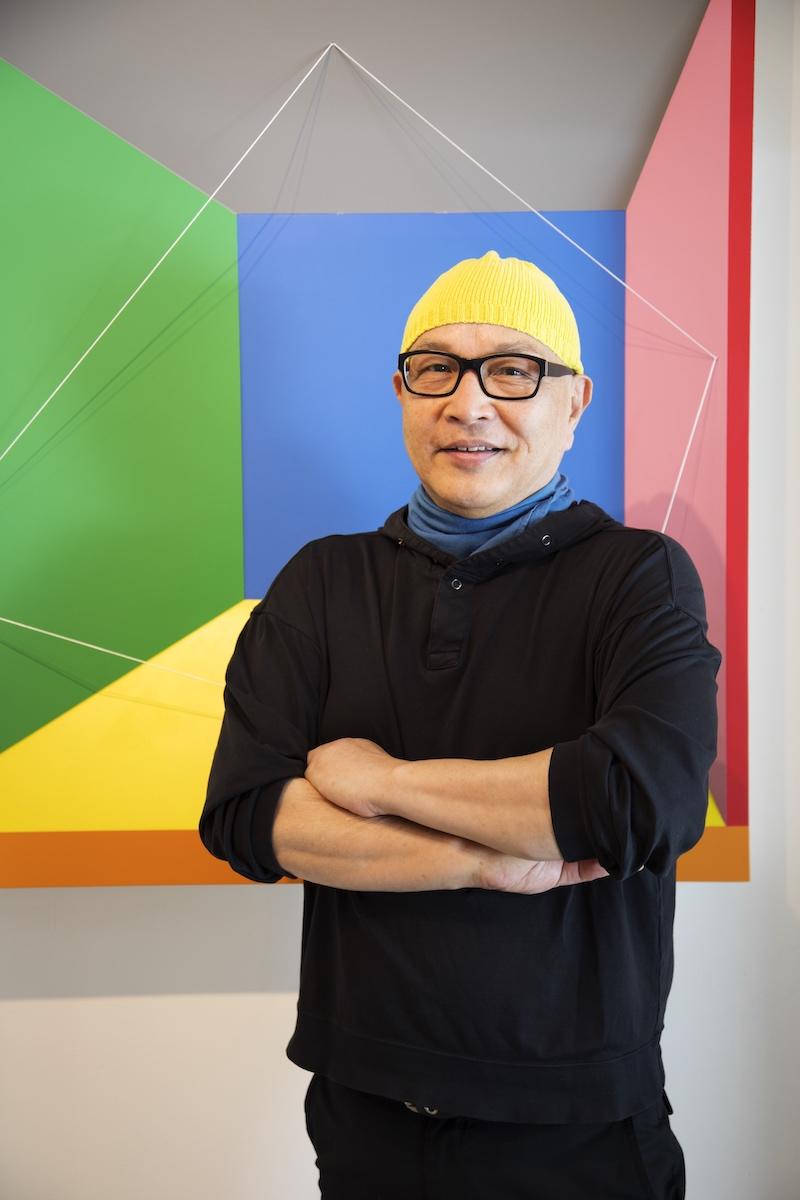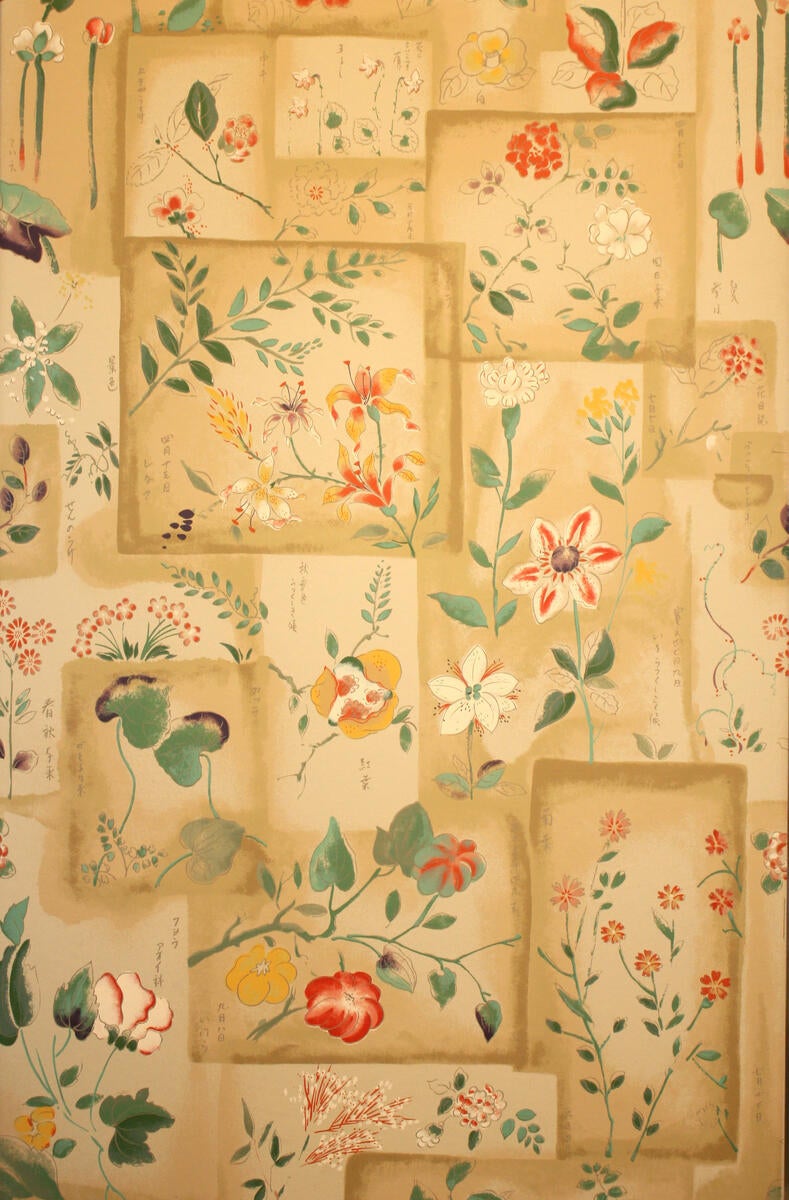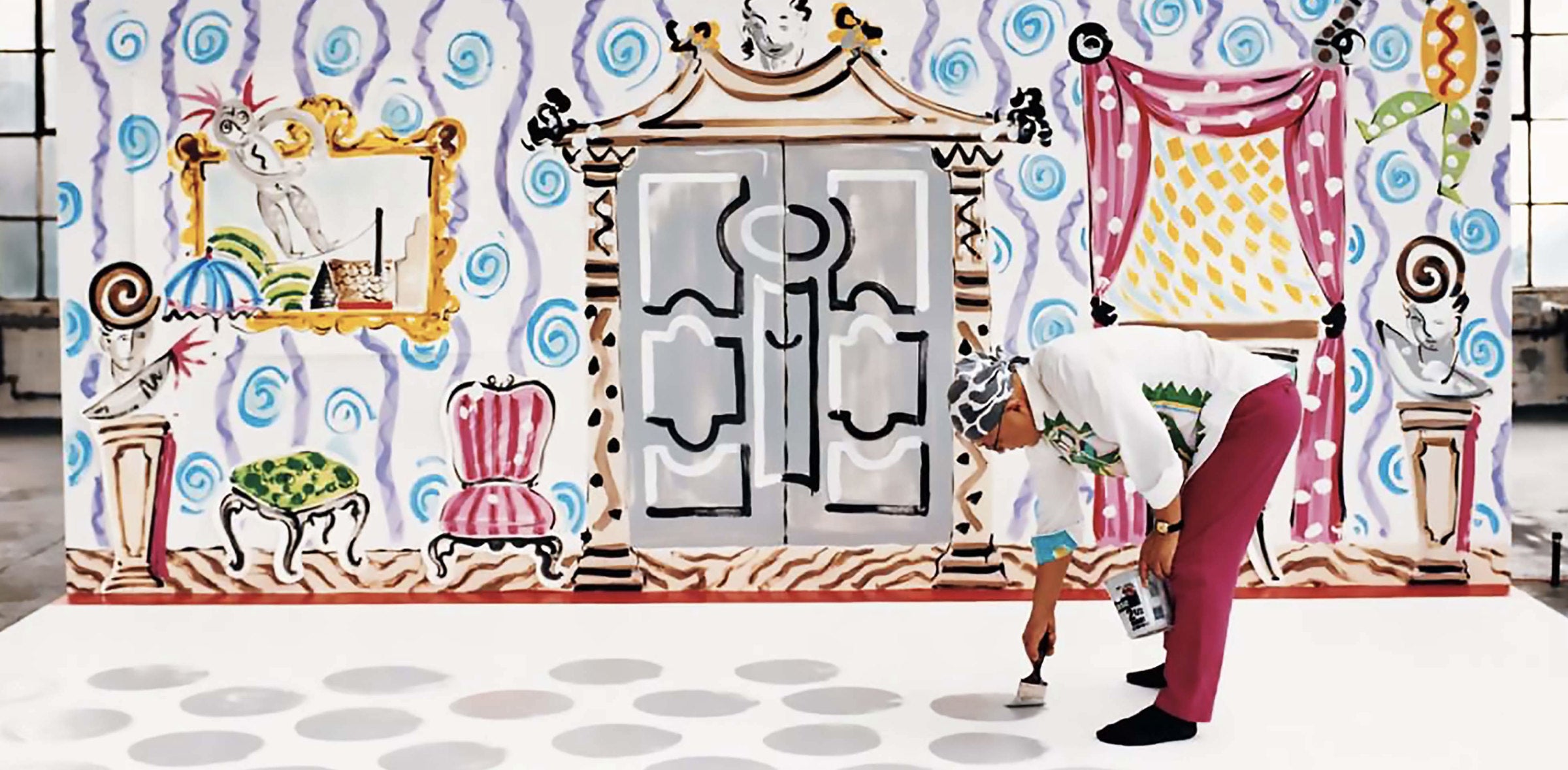One afternoon in 1981, textile designer Kazumi Yoshida arrived at a slate gray town house with blood red awnings on East 57th Street. His hair was long and he was wearing flared pants, platform shoes and a fake monkey-fur coat. He was looking for a job. There was a plaque on the building: “Clarence House. Paris. London. New York.” As it turned out, two of those four statements were lies—there were no Paris or London locations. But it was Clarence House, then one of the design industry’s most vital fabric brands. Inside, Yoshida asked for Robin Roberts, the company’s founder.

“The French receptionist called Robin and said, ‘There’s somebody downstairs who’d like to see you.’ He said, ‘Who is that?’” Yoshida recounts to host Dennis Scully on the latest episode of The Business of Home Podcast. “He happened to be sitting on the balcony looking down on me and telling the receptionist, ‘Who is that crazy man? Tell him to come back.’” Fortunately, Yoshida did come back, and thus began one of the most fruitful partnerships of the late 20th-century textile industry.
Roberts founded Clarence House in 1961. From the very beginning, the company was built on his boldness, panache and preference for a great story over bedrock truth. Roberts had changed his own name (from Robert Schwaid), so it was only fitting that he chose a grand name for a business that would come to match his outsize ambition. Clarence House, the London residence of Queen Elizabeth the Queen Mother (and before her, the newlyweds Princess Elizabeth and Prince Philip), fit the bill—never mind the fact that the brand had no connection, official or otherwise, to the royal family.
For 20 years, Clarence House’s stock in trade was importing the finest fabrics from Europe. Roberts had a knack for bringing the best names to New York, and he built his legend by introducing Manhattan to the likes of the late Manuel Canovas, Osborne & Little and Cole & Son. However, by the late 1970s, many of the very same names had begun to open their own showrooms in the States, and Roberts needed his own designs. Enter Yoshida.
“I did the design Papiers Japonais, and before that, I did Chinoiserie Fantastique—that all took off. He made a lot of money out of that,” says Yoshida. “And he decided to hire me as an art director and we started building up; people noticed the unique designs, and all these licensing deals started to come in. … Robin’s attention shifted completely towards me.”

The partnership, which lasted until Roberts’s passing in 2003, defied conventional norms. A self-made character who lived with an opulence that felt almost anachronistic, Roberts would take long trips in the winter, shipping his Rolls-Royce and stacks of Louis Vuitton luggage wherever he went. Yoshida would come with him, bringing along painting supplies. On holiday, he would create many of the patterns that would become bestsellers for Clarence House.
Circumstance drew Clarence House away from the town house and into the Decoration & Design Building. But even there, the company had its own little world: a separate entrance and three floors— designed by Jay Spectre—filled with luxurious furnishings. Even the bathrooms were lined in silk leopard velvet. “Robin didn’t really move into the D&D Building,” says Yoshida. “[It was], ‘I’m not one of them, I’m on my own.’”
Eventually, the wild ride came to an end. Roberts passed away, the company was sold to fabric house P/Kaufmann in the early 2000s, and Clarence House hit a long period of stagnancy. But in 2019, the brand was purchased by Fabricut, and Yoshida rejoined as its artistic director. The brand just hit its 60th anniversary, and he’s looking forward to the next chapter.
“Even Ron Kaufmann from P/Kaufmann said, ‘They have a very good distribution system, they’re very serious businesspeople. If anybody could revive Clarence House, it’s them,’” says Yoshida of Fabricut. “I went on board. … It’s like going back to where it was.”
This episode was sponsored by Serena & Lily and Artistic Tile. Below, check out a few takeaways and listen to the episode. If you like what you hear, subscribe on Apple Podcasts or Spotify.




























